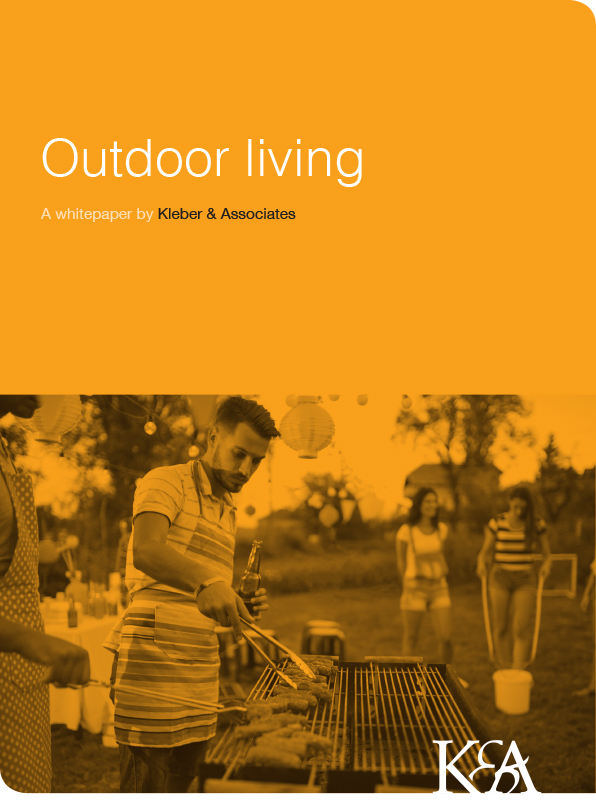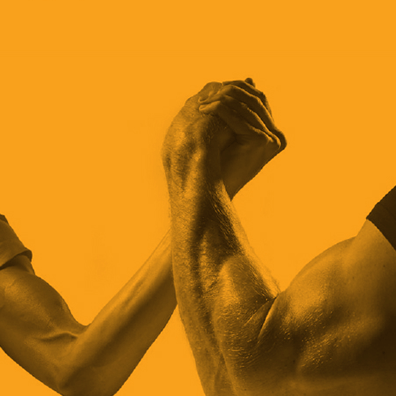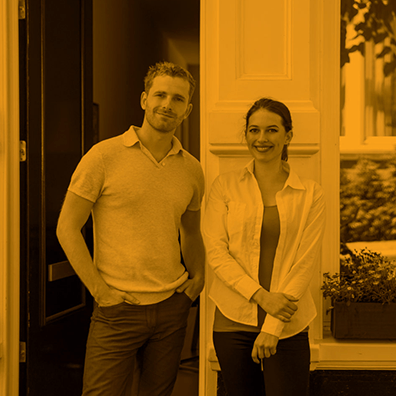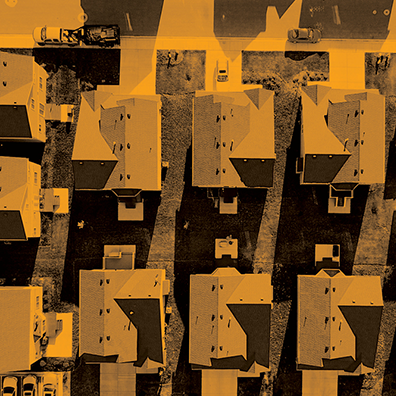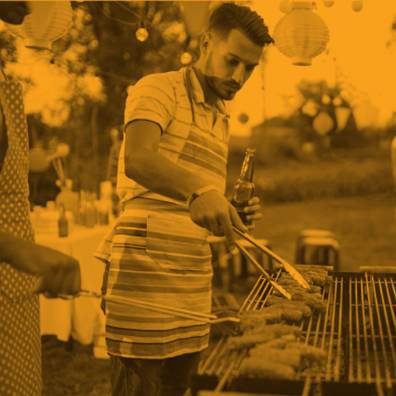Outdoor living
A white paper by Kleber & Associates
Up until the mid-20th century, American home life was split between two types of experiences: Urban living in major cities and factory towns where space was limited and accommodations were tight; and rural living, where the area surrounding the home was used primarily for farming or sharecropping purposes. The Servicemen’s Readjustment Act of 1944 (also known as the G.I. Bill) made it possible for many Americans to afford a home for the first time, paving the way for suburbanization. Detached homes and fenced-off backyards led to another way of life new to many Americans – outdoor living. It’s hard to imagine today’s America without patio furniture, porch swings, barbecue grills, fire pits, and all the amenities that come with extending home to the immediate outdoors.
The outdoor living market has grown over the past few decades, but has accelerated in 2020. As COVID-19 has interrupted many people’s spring and summer travel plans, more of American life is taking place at home. Many antsy, homebound Americans are reevaluating their outdoor living spaces and, with no resorts to travel to, are increasingly motivated to turn their backyards into oases.
Moving forward, outdoor living will likely have a much greater impact on residential design as well as the construction, home products, and building products industries. Read on as we explore outdoor living trends, how they are currently impacting design and home preferences, and how building product companies can take advantage of these trends in a post-COVID-19 world.
The Great Outdoors
The popularity of outdoor living has increased over the past decade as more homeowners look for ways to squeeze additional luxury out of their homes. Homeowners are using existing spaces to create ideal outdoor areas for relaxing and entertainment that blend well with indoor living. Most homes are already equipped with decks, patios and backyards so it is easier for consumers to renovate these spaces as an alternative to building additional rooms or extending the home itself.
Key Drivers of Outdoor Living
• Changing Consumer Attitudes
• Increased Homebuilder Competition
• Falling Price of Building Products
• Rise of the Millennial Homeowner
• Population Shift to Temperate Climate
According to a recent report from the American Institute of Architects (AIA) report, outdoor living areas topped the list of home features growing in popularity, with almost 58 percent of survey respondents reporting an increased interest in their outdoor spaces. In 2018 and 2019, outdoor cooking spaces topped the list of kitchen trends for the second year in a row, according to the AIA.
The standard deck attached to a house is often insufficient as an outdoor living area and not able to accommodate large amounts of furniture or equipment. As more memories get made in the backyard, homeowners will be looking for stronger, more durable outdoor products and amenities that are attractive yet require a minimal amount of upkeep.
Key Motivators Driving the Trend
In a focus group conducted by K&A prior to COVID-19, our firm attempted to define homeowner priorities as they relate to the outdoors and pinpoint the key motivators considered when creating or renovating outdoor living spaces. Out of the discussion, several key motivators stood out:
Reasons for Outdoor Living
| Increases the resale value of my home | 74% |
| Enhances the environment of my home | 74% |
| Is a way to find refuge or escape every day | 64% |
| Spend time outside, even in bad weather | 53% |
| Will encourage me to entertain at home | 51% |
| Requires a lot of effort and maintenance | 50% |
| Helps me connect with nature | 48% |
| Encourages family to spend time at home | 45% |
| Is very popular among people I know | 44% |
| Is too expensive for me right now | 41% |
| Means I will spend less money eating out | 37% |
| Increases my perceived social status | 22% |
|
Is a waste of money |
14% |
Source: Kleber & Associates Outdoor Living Survey
- Less discretionary spending – Financial challenges during the past decade influenced many focus group members to re-examine their discretionary spending on things like travel and dining and instead to look for ways to make their home a more attractive place for their families. As one focus group member expressed, “[Outdoor improvements] will encourage my family to spend more time at home” and “means that I will spend less money on eating out and entertainment.”
- Better home equity – Also tied to economic concerns of the past decade, many focus group members desired manageable improvements that would increase their home’s value and ‘curb appeal’ in case they have to sell. Focus group members expressed more financial comfort with outdoor improvements compared to larger improvements like room additions or basement remodeling.
- Relaxation – Peace and relaxation emerged as key motivators. Focus group members indicated that outdoor living spaces offered families quiet places to reflect and recharge, away from the pull of laptops, mobile devices, and a 24/7 news cycle. As one focus group member expressed, “On Sunday mornings, we’ll take the paper outside and I’ll pretend I’m in the mountains. You can only see the trees … and it feels like getting away.” Water features and other elements that “increase the home’s atmosphere” were identified as highly desirable.
In summary, many of our focus group members, up until the very moment of COVID-19, were interested in outdoor living improvements as a way to enhance their properties’ resale value, and to make their property more livable, useful, and “staycation-worthy.” As COVID-19 has brought additional financial insecurity and confined many people to their homes, many of the feelings expressed by our focus group members have likely intensified. Other homeowner priorities likely to become more important in the wake of COVID-19 include home offices, multipurpose spaces and private spaces to retreat from other members of the family when desired.
More than ever, people need a place to call their personal oasis.
More Homeowners Spending Money on Outdoor Improvements
According the 2019 U.S. Houzz & Home report, homeowners are investing more to improve their outdoor spaces. In 2018, of the more than 128,000 homeowners surveyed, more than half of homeowners who renovated also chose to improve an outdoor space in some capacity. These improvements ranged from as small as revamping planting beds and borders to adding a deck, patio, or swimming pool.
According to Houzz, the median spend amount on outdoor renovations was $5,000 in 2018. While more than half of homeowners spent more on their outdoor projects, homeowners tackled a variety of outdoor projects with a range of price tags. For example, outdoor lighting improvements averaged at about $400, while adding an outdoor pool averaged $14,250, according to Houzz (this includes design, permits, materials, and labor fees). For garden beds and borders, the median spend amount was $750; for lawn improvements, it was $1,000. New irrigation systems had a median cost of $1,000, while homeowners spent an average of $500 to improve their outdoor security systems. The median spend amount for decks, patios, and terraces was approximately $2,500.
Some other major takeaways of the report include:
- Most Outdoor Renovations Happened in the Backyard – Homeowners renovating their outdoor areas focused on backyards the most (77 percent). However, more than half of renovating homeowners upgrading their outdoor spaces improved front yards, and nearly 40 percent updated side yards.
- Nearly All Renovating Homeowners Hired a Professional – Nine out of 10 renovating homeowners who undertook an outdoor project in 2018 hired at least one professional. Almost a third of homeowners worked with a gardener or lawn-care specialist. Seventeen percent of renovating homeowners hired a landscape contractor, who can manage an outdoor project or construct/execute the plan of a landscape designer or architect.
- Makeovers Addressed Aesthetics – Renovating homeowners who upgraded their outdoor spaces overwhelmingly prioritized the beauty of those spaces during upgrades. More than a third reported that they wanted to address an outdated or undesirable design or style, and one quarter of homeowners said they wanted to update old or outdated finishes. Sixteen percent of homeowners who undertook outdoor projects did so to address damage from storms, flooding, and erosion.
- Planting, Lighting, and Security Upgrades are Popular – More than a quarter of renovating homeowners improved garden beds and borders, while upgrades to lawns, fences, and patios or terraces were also popular. Eight percent added a shed or workshop, while 5 percent added a swimming pool. One in five renovating homeowners made updates to outdoor lighting. Outdoor security as part of a home renovation, which includes adding products like cameras and sensors, also continues to grow and has increased in the past three years, according to the report.
Product and Design Preferences
K&A’s research into outdoor living trends illustrates how well established the market penetration of outdoor living basics is. Grills, gardens and landscaping, basic outdoor dining furniture, and outdoor lighting ranked among the highest in terms of preference. In regard to product penetration, some of the fastest growing outdoor living product categories were still registering low on adoption. However, we found that the overriding trend is that people want their outdoor spaces to function as an additional living area with all of the comforts that were once limited to indoor rooms.
Additional research confirmed that consumers wish to integrate smart technology into outdoor living spaces. As technology has become a part of everyday life (especially for millennials), gadgets such as high-definition televisions, technologically advanced outdoor kitchens, grills and lighting have become “must-haves” for outdoor living spaces … and will only continue to gain importance in the future.
Penetration of
Outdoor Living Amenities
| Professional Landscaping | 29% |
| Vegetable Garden | 27% |
| Candles | 18% |
| Outdoor Fireplace/Pit | 16% |
| Tiki Torches | 16% |
| Water Feature | 15% |
| Sunroom or Screened-in Porch | 15% |
| Hot Tub | 14% |
| Mosquito/insect Eliminator | 12% |
| Sound System | 12% |
| Outdoor Area Rug | 6% |
| Television | 5% |
| Outdoor Heater / Heat Lamp | 3% |
Source: Kleber & Associates Outdoor Living Survey
Other product features and design trends of note: pergolas, arbors, fencing, sleeping spaces, outdoor cooling systems and heaters, showers/baths and hammocks. An increasing number of homeowners are also focusing on their pets and incorporating them into their outdoor designs with features like pet baths and lounge areas. Decks and patios remain the gathering point for outdoor living, just as kitchens are the focal point of entertainment and family time indoors.
The Impact of Innovation
The current trend in outdoor living isn’t driven solely by homebuyer preferences. As with any trend, there are mitigating factors that can affect the marketplace and result in changes to consumer attitudes. For example, new design ideas may catch on in one part of the country and then gain prominence in other areas over time. Or innovations in manufacturing processes can drive down costs, making products more affordable and available to a wider audience.
The start of the outdoor living trend likely dates back to 1964 when Deane Homes – then one of the largest builders in the nation – developed a home plan with a large pass-through window in the kitchen that opened to a small patio. They called it “The Garden Kitchen.” The design was an instant hit with buyers, selling twice as fast as other home designs.
Several decades later, new design ideas and innovations are once again spurring new trends in homebuilding. In that sense, one might think of outdoor living design options as “Garden Kitchen 2.0.” Custom builders today are offering a wide array of upscale outdoor living options. From loggias to verandas, porticos, and patios, the customizable features are seemingly endless. According to Garrett Hoskins, senior project director at Robert Hidey Architects, “Outdoor courts, rooms and loggias are distinct living spaces that enhance the livability and functionality of the floorplan.”
K&A Plan-to-Install “Hot List”
| Outdoor Item | 12-Month | 5-Year |
| DIY Landscaping | 35% | 25% |
| Flower Garden | 31% | 24% |
| Outdoor Lightings | 16% | 34% |
| Lounge Furniture | 15% | 33% |
| Cushions for Furniture | 15% | 33% |
| Vegetable Garden | 23% | 19% |
| Outdoor Dining Furniture | 14% | 27% |
Base: 404 *12-month activity refers to the proportion of respondents who are likely to purchase/install this item within the next 12 months (including new entrants and existing owners replacing or upgrading).
**5-year activity refers to the proportion of respondents who are likely to purchase/install this item within the next 2-5 years (including new entrants and existing owners replacing or upgrading).
Source: Kleber & Associates Outdoor Living Survey
Benchmark Homes of Douglasville, Georgia allows homeowners to customize their outdoor living setting, choosing from a wide selection of features, including outdoor lighting and music options, fireplaces, pools, hot tubs, water fountains, kitchens, and living areas. According to Lisa Justus of Benchmark Homes: “Most of the loggias and verandas we design are covered and arched with columns and fireplaces, opening up to the outdoors. Outdoor living is a natural, healthy and somewhat unique opportunity. Entertaining becomes more fun and engaging because now you have another hostess — the great outdoors.”
Another reason for the growth in outdoor living spaces is the emergence of innovative outdoor-specific appliances and systems designed for outdoor kitchens and entertainment areas. Just a few years back, appliances and electronics designated for outdoor living areas were really made for interior applications and were not very effective. Now manufacturers are making useable products for the outdoor environment, such as televisions with glare-free screens and outdoor freezers, refrigerators, and kegerators.
The Most Admired
Outdoor Living
Design Elements
• Fire Places / Fire Pits
• Outdoor Lighting
• Barbecue Grills
• Outdoor Furniture
• Seating/Dining Areas
• Wi-Fi / Internet Access
• Planters/Sculptures
• Counter Space
• Stereo Systems
• TV/Home Theaters
• Utility Storage
• Sinks
• Refrigerators
The Effects of Homebuilder Competition
Yet another driving force behind the outdoor living phenomenon is homebuilder competitiveness. With the effects of the financial crisis lingering, builders and architects are looking for ways to differentiate their designs, attract customers, and stimulate sales. For example, Rosewood Homes in Scottsdale, Arizona has incorporated expansive 12-foot-wide, eight-foot-tall multi-slide doors in their latest home plans to differentiate their homes from the competition.
“We experimented with the technology in some of our spec homes, and we feel really good about it. The buyers absolutely love it,” says David Kitnick, president and founder of Rosewood Homes. “Our new model will have a 12-foot panel on the back of the house, right off the great room, and there’s a large covered patio behind it. Buyers are going to see it right away when they enter the home. Twelve feet of glass is really impressive.
“People’s mindset has changed because of the challenging economic times,” Kitnick adds. “They aren’t buying the new car or TV as quickly as they used to, and they’re staying put in their homes. So we’ve all tried to find new products and new designs to give somebody a compelling reason why they should move.”
Outdoor Living Sells Homes
Professional Builder Editor-in-Chief Rich Binsacca says, “Extensive multifunction outdoor living spaces will return its investment,” and suggests focusing on designing spaces that people will ideally use “year-round and often” rather than focusing on endless amenities. He recommends utilizing multiple living spaces with an outdoor footprint, similar ceiling treatment and wall materials both indoors and outdoors to ease transitions, gathering areas outside that are convenient to gathering areas inside, multiple points of access, and deep overhangs to reduce glare and solar heat gain.
“Outdoor living is the new dining room,” says Phil Corley, vice president of marketing for Crown Communities in Atlanta. “We are seeing less formal dining rooms and more outdoor living spaces.”
Many builders are using the trend as an incentive to get potential buyers in the door. For instance, Atlanta-based Edward Andrews Homes offers upgrades like brick paver patios, screen-in porches, and outdoor kitchens to entice buyers. Outdoor space is cheaper to build out than an enclosed space and increases the livable area of the building at a lower cost per square foot without posing zoning issues.
Broadening the Customer Base
Advancements in technology, product innovations and manufacturing efficiencies are also helping to drive the growth in outdoor living by making high-end features and amenities more affordable and available — in effect, extending the potential customer base beyond only luxury homebuyers. A number of manufacturers — including Western Window Systems, Paramount Windows and Doors, Southland Windows and Doors, and Ply Gem Windows — are designing and selling multi-slide and multi-fold doors targeted toward production builders. As the housing market continues its recovery and outdoor living remains a hot-selling feature, the list of manufacturers offering these types of doors for the production market will only grow.
As a result, production builders are getting access to products that enable them to create real design statements in their plans at price points that fall within the range of a mid- to higher-end upgrades. Patio door technology that was simply out of reach for most production builders several years ago — with price points that started in the $10,000-$15,000 per unit range — are now available for about half that cost.
Average Temperatures of Top
2015 U.S. Real Estate Markets
| 1. Houston | 60° — 82° |
| 2. Austin | 57° — 82° |
| 3. San Francisco | 57° — 65° |
| 4. Denver | 37° — 70° |
| 5. Dallas/Fort Worth | 55° — 82° |
| 6. Los Angeles | 62° — 71° |
| 7. Charlotte | 49° — 77° |
| 8. Seattle | 45° — 64° |
| 9. Boston | 60° — 82° |
| 10. Raleigh/Durham | 50° — 78° |
| 11. Atlanta | 52° — 79° |
| 12. Orange County | 59° — 70° |
| 13. Nashville | 48° — 77° |
Geography and Outdoor Living
One more interesting trend we believe may be contributing to the growth of outdoor living is the shifting geography of the U.S. population.
According to the latest U.S. Census data (2015), while the West and South saw growth rates of 13.8 and 14.3 percent, respectively, over the last decade, the Midwest grew by 3.9 percent, and the Northeast by a mere 3.2 percent. These figures reflect a movement of young people westward, as well as an overall population shift to the South and West.
Although the average outdoor temperatures are decidedly more temperate in these areas than in the Northeast and Midwest, other research suggests that outdoor living is also popular in colder climates. Still, we can’t help but conclude that beautiful, sunny weather and mild winters are contributing to the increased popularity of outdoor living.
The outdoor living phenomenon has exhibited sustained growth and shows no signs of slowing down, at least in the short term. As people depend on their homes even more, landscape projects, and home redesigns and other outdoor renovations will be taken to an even higher level.
About Kleber & Associates
Founded in 1987, Kleber & Associates is the established leader in brand development and integrated communications for clients in the construction and building products industry. The Atlanta-based agency works in partnership with a variety of client brands that market products for both residential and commercial construction applications targeted to consumers, architects and designers, as well as developers, builders, remodelers and contractors. The agency addresses its clients’ needs through a strategic, disciplined brand development process, combined with customized communications programming and an in-depth knowledge of the marketplace.
Agency Founder, Steven Kleber, is the current president of the National Remodeling Foundation (NRF) and the immediate-past president of the Center for Kitchen & Bath Education and Research (CKBER). He serves on the board of trustees for the Home Projects Council as well as on the Global Opportunities Board of the National Association of Homebuilders.

